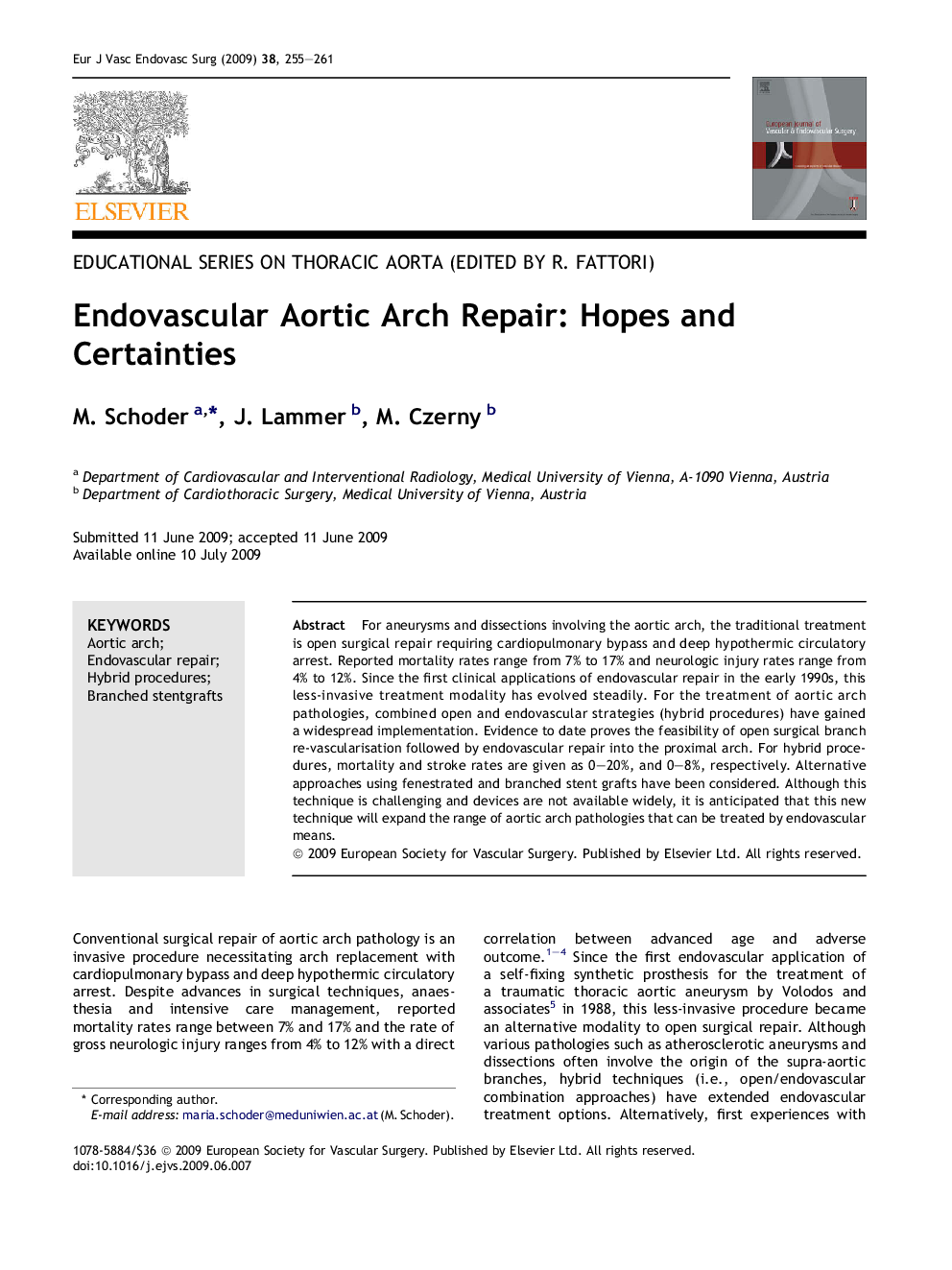| Article ID | Journal | Published Year | Pages | File Type |
|---|---|---|---|---|
| 2913188 | European Journal of Vascular and Endovascular Surgery | 2009 | 7 Pages |
For aneurysms and dissections involving the aortic arch, the traditional treatment is open surgical repair requiring cardiopulmonary bypass and deep hypothermic circulatory arrest. Reported mortality rates range from 7% to 17% and neurologic injury rates range from 4% to 12%. Since the first clinical applications of endovascular repair in the early 1990s, this less-invasive treatment modality has evolved steadily. For the treatment of aortic arch pathologies, combined open and endovascular strategies (hybrid procedures) have gained a widespread implementation. Evidence to date proves the feasibility of open surgical branch re-vascularisation followed by endovascular repair into the proximal arch. For hybrid procedures, mortality and stroke rates are given as 0–20%, and 0–8%, respectively. Alternative approaches using fenestrated and branched stent grafts have been considered. Although this technique is challenging and devices are not available widely, it is anticipated that this new technique will expand the range of aortic arch pathologies that can be treated by endovascular means.
